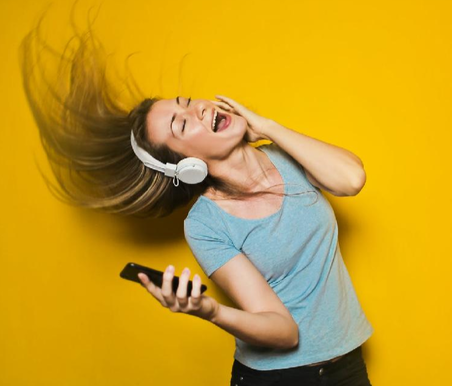 Hearing loss is usually associated with older adults, however a growing body of evidence and research points to an increase in hearing loss in children due to exposure to loud sounds or noise. In fact, one in 5 U.S. teenagers now suffers from some type of hearing loss1. It is also estimated that approximately 3 million children in the U.S. have a hearing loss and that 15% of children between the ages of 6 to 19 have a measurable hearing loss in at least one ear2. For many, this is due to noise-induced hearing loss. One of the main causes of noise-induced hearing loss is the increased use of headphones and other personal audio technology. If devices such as ear buds and headphones are not used safely, they present a real danger and a growing problem to the hearing health of children and teens.
Hearing loss is usually associated with older adults, however a growing body of evidence and research points to an increase in hearing loss in children due to exposure to loud sounds or noise. In fact, one in 5 U.S. teenagers now suffers from some type of hearing loss1. It is also estimated that approximately 3 million children in the U.S. have a hearing loss and that 15% of children between the ages of 6 to 19 have a measurable hearing loss in at least one ear2. For many, this is due to noise-induced hearing loss. One of the main causes of noise-induced hearing loss is the increased use of headphones and other personal audio technology. If devices such as ear buds and headphones are not used safely, they present a real danger and a growing problem to the hearing health of children and teens.
As the holiday season approaches, audio technology is certainly at the top of many wish lists, as well as other toys that may produce excessively high noise levels. So, how do we make sure these devices are used safely?
First, teach kids to use these devices at safe volume levels. Show them how to keep the volume on their device at the 50% volume level and encourage them to take frequent listening breaks. The Hearing Industries Association (HIA) has produced a PSA video to remind children and teens that listening to music at safe volume levels can preserve their hearing for longer. Second, set a good example and keep the levels down on your devices, so adults join in practicing safe listening as well. One suggestion is to make a family pledge for safe listening. Third, look for devices with features that can help reduce the overall output levels. Headphones or ear buds with noise-cancelling technology keep the outside noise low, so the audio signal going to the ears can be kept at a lower level without sacrificing the enjoyment of sound. Some devices have output limits built in and keep the volume in the ear to a safe level. Another way to judge the level of the audio output is to stand about an arm’s length away from the child wearing headphones and ask the child a question. If they cannot hear you – the level is probably too loud.
During the pandemic we may not be attending live, noisy events. When we return to them, check to see if earplugs can be used to reduce the listening levels to enjoy the event while protecting your hearing. If you attend a loud event and notice ringing or pain in your ears, give your ears time to rest afterwards or even consider leaving early to protect your hearing.
Good hearing is essential especially for young children who are still learning and developing speech, language, and academic skills. Remember, noise-induced hearing loss is the only completely preventable form of hearing loss, so let’s all work together to protect our children and the years and years of good hearing health ahead of them. Their future depends on it.